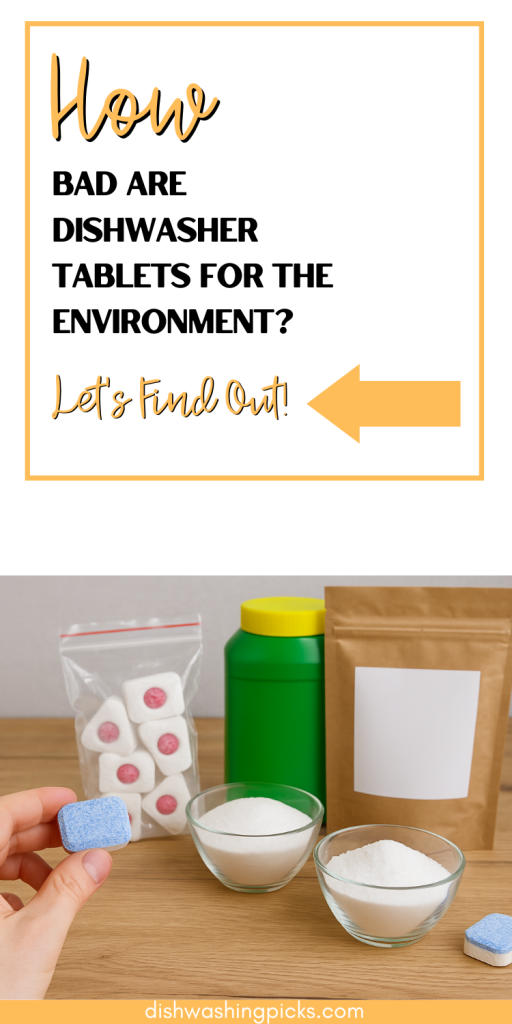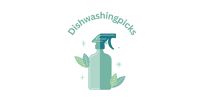
Okay, so picture this: You just finished a big dinner (we’re talking full spread—lasagna, garlic bread, salad, the whole works), and your sink is stacked with dishes that could qualify as a minor art installation. You toss a dishwasher tablet into the machine, press the button, and voilà—done and dusted.
But have you ever paused and thought, Wait… what’s actually in this tiny tablet? And where does all of it go once it drains away?
Let’s talk about it.
What’s Actually in a Dishwasher Tablet, Anyway?
Alright, not to scare you off your post-dinner cleanup routine, but those magical little pods? They pack more than just grease-fighting power.
Most commercial dishwasher tablets are a cocktail of surfactants (that’s the stuff that lifts grime), phosphates, bleach, enzymes, and synthetic fragrances. Oh, and don’t forget those colorful plastic-looking wrappers if you’re using pods—those are made of PVA (polyvinyl alcohol), which is technically water-soluble plastic. Sounds fancy, right?
But here’s the kicker: just because something dissolves doesn’t mean it disappears harmlessly.
Are They Really That Harmful?
Let’s keep it real—it’s not like one tablet is going to poison the planet. But it’s the cumulative effect that gets dicey.
Phosphates, for example, used to be a major problem. They helped make dishes sparkle, sure, but they also contributed to a little thing called eutrophication—which is a fancy way of saying, “Hey, let’s choke out this lake with algae and kill all the fish.” Lovely, right?
Thankfully, many countries have started banning phosphates in household detergents. But that doesn’t mean everything in your dishwasher tablet is suddenly eco-friendly. Some ingredients can still harm aquatic ecosystems, especially synthetic fragrances and microplastics that sneak in through certain coatings or ingredients.
Oh, and let’s not forget about packaging waste. Even if the pods dissolve, the outer boxes, plastic containers, and shipping materials… well, they stick around.
But Wait—Isn’t PVA Biodegradable?
This is where it gets a little murky.
PVA does dissolve in water, but recent studies are raising eyebrows about how much of it actually biodegrades in the real world (you know, outside of a tightly controlled lab environment). If it just breaks down into smaller plastic particles and ends up in waterways, we’ve got ourselves yet another microplastics problem.
So while it sounds like a win, it’s more of a “meh” for Mother Nature.
So, What Can You Do Instead?
Don’t worry, I’m not about to suggest you go full medieval and start scrubbing plates with sand and twigs.
But here are a few realistic, planet-friendlier options:
- Try eco-certified tablets or powders. Look for brands that skip the harmful stuff—no phosphates, no chlorine, biodegradable packaging. Bonus points if they’re fragrance-free.
- Consider switching to dishwasher powders or gels in recyclable packaging. Some of these come in cardboard boxes or refillable containers, which can be way easier on the planet.
- Use half a tablet. Sounds weird, but it often does the job, especially if your dishwasher isn’t completely crammed.
- DIY (if you’re feeling ambitious). There are recipes out there using baking soda, citric acid, and washing soda. Fair warning—it’s hit or miss, but fun to try.
Dishwasher tablets aren’t the devil, but they’re also not totally innocent. They’re a tiny piece of a much bigger environmental puzzle. The good news? You’ve got options. Even small shifts in your cleaning routine can reduce your footprint over time.
So next time you’re about to load the dishwasher, maybe take a sec to think, Is there a slightly greener way I can do this? If so, go for it. If not, hey, you’re still thinking about it—and that’s a win.
